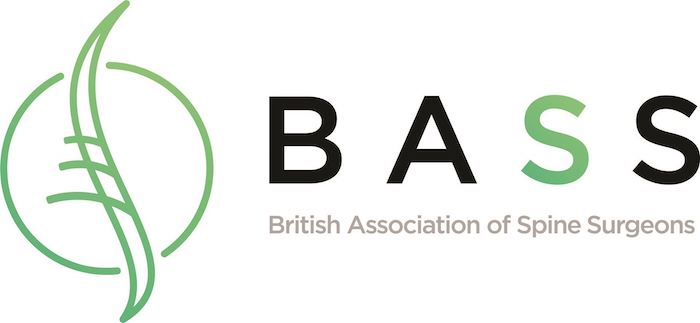Conditions treated: spinal stenosis
What is spinal stenosis?
Spinal stenosis occurs when the spinal canal has reduced in size so that the spinal nerves can no longer function properly. The actual cause of the malfunction in the nerves is not really understood, but it is thought that it may be as a result of not enough blood getting to the nerve (arterial insufficiency) or blood not being able to flow away and chemicals building up that shouldn’t (venous occlusion). Either way the spinal canal has become narrowed and the nerves are affected. The symptoms felt are usually a numb, aching, cramp-like pain brought on by walking, and relieved by stopping or leaning forward.
It is insidious in onset, which means it creeps up on you in a stealth-like manner and usually occurs after the age of 50. If severe it can cause cauda equina syndrome with loss of bowel and bladder function. As the condition progresses the symptoms may come on simply by standing, and your standing time may reduce. Progression of the disease is measured by a reduction in walking distance initially, and as already mentioned by a reduction in standing time.
The pain felt on walking is medically referred to as “claudication” and interestingly, not enough blood getting to the muscles of the leg can also cause these very same symptoms. This is known as peripheral vascular disease (PVD) or arterial insufficiency syndrome, and this type of claudication is medically termed “intermittent claudication” as opposed to “spinal claudication”. The easiest way to exclude this as a cause is to see if you can feel the arterial blood vessels pulsating lower down the leg. If you can’t then it may be peripheral vascular disease, but it is important to remember that both spinal stenosis and PVD may co-exist.
My definition of spinal stenosis is “claudication with evidence of chronic nerve root compression or irritation in the presence of a spinal canal lesion on imaging, and the absence of vascular insufficiency.”
So what causes it?
Well, you can be born with it. This is referred to as congenital spinal stenosis, but more commonly it is acquired with time due to degenerative changes within the spine. Basically as the disc degenerates, the disc loses height. As it loses height it causes the intervertebral disc to bulge into the canal. This causes a progressive narrowing of the canal from the front. As the disc loses height it also causes the facet joints behind the canal to load abnormally. This in turn, causes the facet joint to wear abnormally causing a degree of loss of articular cartilage within the facet joints. This is known as facet joint arthropathy, or more simply osteoarthritis of the facet joint or spine. In osteoarthritis the body starts to form new bone to try and stabilise the joint. This new bone is called an osteophyte. These osteophytes then grow into the canal narrowing the canal from the sides and back.
As this occurs very slowly patients do not have symptoms for many years until the point at which the spinal canal has lost all its reserve capacity and the nerves are finally affected. This is why it is referred to as insidious in onset. Even as it starts, patients will often ignore the symptoms or attribute it to something else until it becomes very obvious that their walking distance has reduced significantly.
Sometimes it can come on very abruptly, but this is usually when the patient has suffered an acute disc herniation in an already narrow canal and the disc herniation takes up all of the reserve capacity in the spine very suddenly. On these occasions it is important to be aware of the risk of developing cauda equina syndrome.
What are the treatments for spinal stenosis?
Surgical treatment options are either a spinal injection or spinal surgery to formally free the nerve roots. In terms of spinal surgery options, these may take the form of a laminectomy, a “flip” spinous process osteotomy or a targeted decompression depending on the degree of spinal stenosis and its location relative to the canal.
Spinal injections can work by reducing the collective inflammation of the nerve roots at the point of compression, as well as producing a degree of epidural fat atrophy - thereby increasing the capacity within the canal.
The simplest analogy and please stay with me on this one - imagine lots of people standing in a room in which the walls are moving in “James Bond” style. The walls moving in relates to the spinal stenosis. Unfortunately the “baddie” has also lowered the temperature in the room but has provided big woolly coats for everyone to wear. The dilemma is by wearing the coats everyone is more swollen and therefore cannot move and suffocates. This relates to the nerves swelling within the canal secondary to the inflammatory response to the mechanical irritation of being compressed. Remember that Celsus’s cardinal signs of inflammation are redness, heat, pain and swelling.
By delivering a spinal injection with an anti-inflammatory steroid we are reducing the swelling of the nerve roots in the canal by reducing the inflammatory process associated with the mechanical irritation of the nerve roots. This is just like increasing the temperature in the room so that everyone can take their big woolly coats off and leave them outside the room. We have the same number of people in the room, but they are all individually less swollen so there is more space for them to move around and be comfortable in the room.
It is difficult to predict how long a spinal injection will last in these circumstances but often in my experience it can last up to 6 months or more, and in elderly patients in whom surgery is not really an option it is a suitable measure to buy some time.



